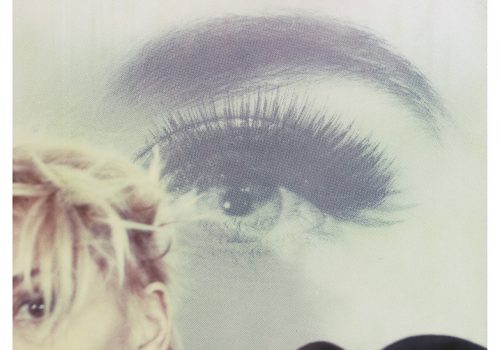Muriel Berthou Crestey’s book, “At the heart of photographic creation” offers a meeting with 24 of the greatest contemporary photographers.
Photographers speak. What are the regrets or surprises that punctuate a photographer’s life? What are the corresponding realization, sharing and selling strategies? What are the starting points, the theme, the forms, etc. ? What are the moods of photographers? How have new technologies changed their practices? To answer these questions and many others, Muriel Berthou Crestey met photographers representative of various movements of the contemporary era.
The Eye of Photography presents to you in the coming days extracts from these interviews, today Valerie Belin.
The Image in Majesty (the interview published includes 26 questions – here are 4)
- B. C. Are you aware of what you are doing when you start the device?
- B. There are surprises when I am in search of the idea, of the thing that will arise. But once this happy chance has been provoked, it is a question of reproducing it. In a second phase, there is the shaping, the search for an effect that I must find in each image belonging to the same series. But there is a lot of pragmatism, empiricism in my approach when the subject is defined.
- B. C. Are there protocols in the development of a series? What are the stages of a project?
- B. The first phase is above all mental and mysterious. I am absolutely not conceptual, which explains why my work does not answer to rationalization before the shooting. It’s a form of alchemy and intuition that makes me move from one series to another. And I often find elements that overlap and come together. Floral patterns come back. The development is built gradually. The series of damaged cars is quite significant compared to this progression, which is first of all a blurred intention. I had the vague idea of photographing damaged cars related to my taste for Warhol and pop art, as well as the reappropriation of the object. I looked for addresses of junkyard, in the suburbs of Paris. But once on the scene, the weather was overcast. I was on the ground. The rendering seemed to me documentary and the light did not cause any thing to shine. I did not know how to remedy this disappointment. Once confronted with the subject, I had to transform this desire of departure into very pragmatic reflection in order to imagine better shooting conditions. What point of view to adopt? What light? How to transfigure this object by isolating it by framing it? From one thing to another, I discovered companies where cars were more dented. One day, a very strong sun shined on partially broken sheets of metal and windshields. I climbed on a ladder and I clicked. Neither the object nor the light was documentary. The subject became a broken mirror. But all this is done in perfect unconsciousness. I do not decide on a scheme. Obviously, as time progresses, search, and trial-and-error phase has shortened. With age and experience, research is less laborious. But this phase of doubt still exists. For example, at this moment, I would like to redo portraits because I had a whole period of still life and artificial landscape with theatrical scenes. I’m developing a photography technique that would certainly allow me to go back to it but I do not know a priori how I should do.
- B. C. In your photographs, the vertigo arises partly from the difficulty of the positioning of identity and the ambiguity between masculine, feminine (transsexual). Do these parameters interfere with your formal choices?
- B. I have often used an anthropometric treatment of the faces, for example when I photographed beginner models, in the 2000s. One saw the grain of the skin. But there has been a gradual shift towards dichotomies peculiar to our present civilization. I now seek to question the limit between the virtual and the organic, between the sublime and the human. From now on, there is even a doubt about the reality of what I photograph. Does this exist? Is this woman real or is it the result of 3D modulation software? Of course, all these people exist. Otherwise, the disorder would not exist.
- B. C. Do you prolong the series or interpret them in different forms (performances …)?
- Life is made of chance, of contingencies that we catch or not. I was offered a show with my photographs at the Pompidou Center. The exercise, initially, was not absolutely obvious because I am basically anchored in images. Working with flesh-and-blood characters was already a contradiction. It was a challenge. How to restore the disorder that had seized me making the photographs? I could position several characters on stage at the same time. Michael Jackson never stopped transforming himself until he became more and more unreal. The transformation of oneself, the desire to be another reaches its climax. In contradiction, one had all that related to the individual himself, his particularisms, his fragility and his human aspects which do not reflect in the photograph. There was this encounter between humanity and the desire to become an image. This form of performance was in line with my work as a photographer, but the scene is a work in itself and it was like a shooting star. Same thing for the video. I was able to make series like Blacks Eyed-Susan which were the subject of animated images in adequacy with the photographs. All this is extremely attractive experiences. Latter, time involves making choices. But it does not say that the thing can not happen again in the future.
Muriel Berthou Crestey – Au coeur de la création photographique
ISBN 978-2-8258-0285-4
Editions Ides et Calendes
















